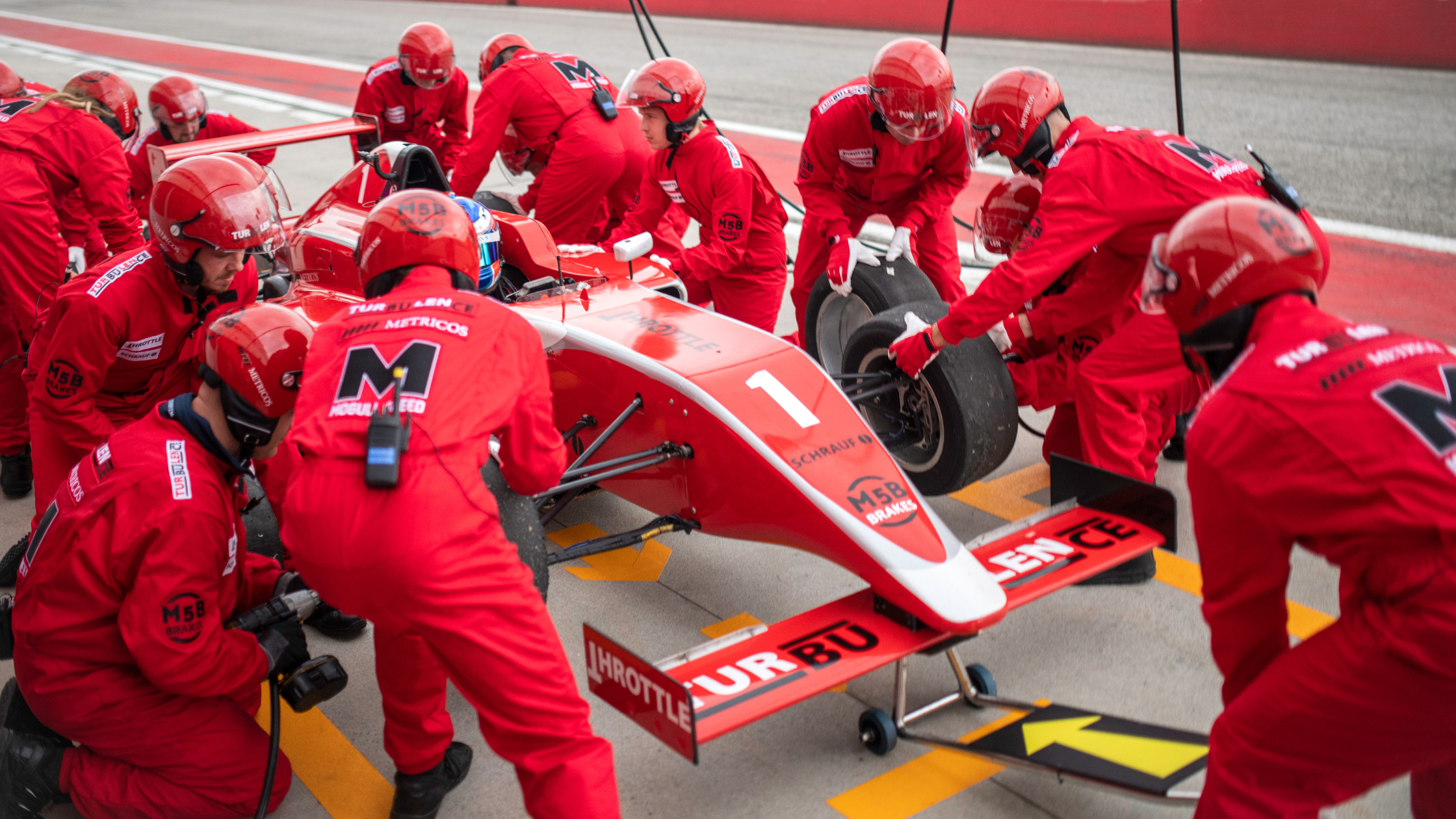"From Chaos to Triumph: Embracing Swarming in the Workplace"
Swarming is a team-based collaboration approach to completing an urgent task or resolving a major incident that could be impacting a customers operation
Imagine a high-stakes car race, where a racing car pulls into the pit stop area, plagued by a multitude of issues. In this critical moment, a lone car mechanic scrambles to replace the tires, refuel the car, and address any mechanical glitches. However, before these crucial tasks can be completed, the race has already concluded.
The ultimate objective, of course, is to swiftly return the car to the race track and secure victory. Yet, this can only be achieved by assembling a cohesive team of mechanics, each addressing a specific issue, all working in unison with a singular purpose – to ensure the car runs flawlessly until the race's triumphant finish.

The Tier 3 System: Enhancing Organisational Problem-Solving
In the realm of organisational operations, many have embraced a tiered model approach, a methodology exemplified by the service desk's operation. When a customer logs a ticket with an issue, the initial attempt to resolve it occurs at the first tier. If the issue proves too complex or elusive for Tier 1, it is then escalated to Tier 2. However, even Tier 2 may encounter challenges beyond its expertise, leading to the final tier, known as the Tier 3 system. Tier 3 represents the pinnacle of technical proficiency within the organization and often consists of developers and product engineers. These Tier 3 experts are summoned into action only when the collaborative efforts of Tier 1 and 2 fall short. Their interventions might involve introducing bug fixes, implementing critical hardware updates, or drawing upon their extensive knowledge to address the issue at hand.

What Are The Drawbacks of the Tier 3 System
One notable drawback of the Tier 3 system is the potential delay it introduces in issue resolution or task completion. When a customer submits a ticket demanding immediate attention, the time it takes for the appropriate individual or team to identify and address the issue can lead to a decrease in overall service quality. Consequently, this delay can result in customer dissatisfaction and frustration.

8 Reasons Why The Tier3 System Might Not Always Work
- Delayed Issue Resolution: As previously mentioned, the Tier 3 system can introduce delays in addressing critical issues. This delay can be especially problematic for urgent matters where quick resolution is essential. Customers and end-users who are facing immediate problems may experience frustration as they wait for Tier 3 experts to intervene.
- Complex Communication: In a Tier 3 setup, communication between tiers becomes crucial. When an issue is escalated from one tier to another, the exchange of information must be seamless to ensure that the experts at Tier 3 have all the necessary details to solve the problem effectively. However, complex communication channels can sometimes lead to misunderstandings or miscommunication, further delaying issue resolution.
- Resource Allocation: Maintaining a Tier 3 team with highly skilled professionals can be resource-intensive. Organizations may need to invest in ongoing training and development to keep Tier 3 experts up-to-date with the latest technologies and solutions. Additionally, the allocation of Tier 3 resources to issues that could have been resolved at lower tiers can be costly and inefficient.
- Customer Satisfaction: Delays in issue resolution and the potential for miscommunication can result in decreased customer satisfaction. Unhappy customers are more likely to voice their frustrations, which can harm an organization's reputation and lead to customer attrition.
- Dependency on Tier 3: Over-reliance on Tier 3 experts may hinder the growth and development of Tier 1 and Tier 2 teams. If lower-tier teams are consistently passing issues to Tier 3 without attempting to enhance their own problem-solving skills, it can create a bottleneck in the system.
- Scalability Challenges: In organizations experiencing rapid growth or sudden increases in support requests, the Tier 3 model may struggle to scale effectively. Hiring and training Tier 3 experts can take time, which may not be available during periods of high demand.
- Cost Considerations: Maintaining a Tier 3 team of highly skilled professionals can be costly. Organizations must weigh the benefits of Tier 3 expertise against the expenses involved, which can include salaries, training, and infrastructure.
- Potential Knowledge Silos: With Tier 3 experts often handling complex and specialized issues, there is a risk of knowledge becoming siloed within the Tier 3 team. This can lead to a lack of knowledge sharing across the organization, hindering overall learning and growth.
Swarming takes on the problem head-on and reduces the time spent diagnosing it by passing it on to other teams. As a bonus, someone in the swarm will gain knowledge if the same problem arises again.
What Are The Key Considerations for Effective Swarming?
In the context of swarming, it's imperative that the team has a clear grasp of their backlog's top priority. This clarity ensures that everyone is aligned in their efforts.
Availability is another critical factor. While assembling the entire team to work on a single task might not always be feasible, the goal is to gather as many team members as possible to tackle the priority item simultaneously.
Effective collaboration is at the heart of swarming. The nature of collaboration can vary depending on the work, but the overarching aim remains consistent: maximize the number of team members working on the item at the same time.
However, there's a potential pitfall. The team might unintentionally slip back into older habits, attempting to divide and conquer their backlog by assigning individuals to different tasks concurrently, which undermines the principles of swarming.
Why Swarming Actually Works
Our modern work environment is rife with distractions, from emails and phone calls to meetings and messaging tools. Multitasking has become a prized skill, but is it truly beneficial in the long run? While some excel at juggling multiple tasks, this approach often leads to delays and reduced quality due to divided attention.
Swarming offers a compelling alternative. By focusing the entire team on one high-priority task, it eliminates the need for multitasking. This collective effort ensures swift and efficient task completion. Moreover, it alleviates the pressure on a single individual by distributing the knowledge and responsibility across the team.
Swarming also nurtures team productivity by fostering mutual support and knowledge sharing. Team members can rely on each other, creating a supportive ecosystem that enhances individual skills.
In Conclusion
Swarming represents a potent work approach that, when employed effectively, not only benefits the team but also bolsters the organisation's ability to deliver a robust service.
Beyond its primary goal, swarming promotes the free and contextual sharing of knowledge among team members. This incidental benefit prevents valuable expertise from remaining locked within the minds of a few and encourages broader knowledge dissemination throughout the organisation.
In the realm of Scrum and collaborative work, swarming stands as a formidable strategy, offering both immediate advantages and long-term growth potential for teams and organisations alike.
"No one can whistle a symphony. It takes a whole orchestra to play it." – H.E. Luccock






